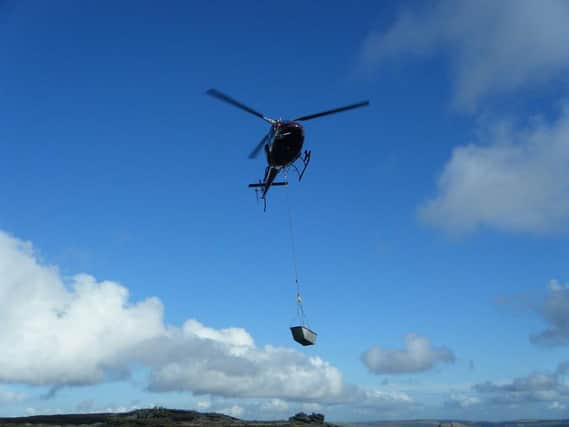Conservation work continues in Peak District despite lockdown challenges


Moors for the Future Partnership’s conservation activities are still taking place during what has been a busy year – with the building of more than 6,000 dams and the spreading of more than 3,500 bags of heather brash across the moors.
The heavy materials involved need to get on to the remote moors by helicopter and the partnership is working with contractors to ensure it can continue protecting the environment despite the challenges of a second lockdown.
Advertisement
Hide AdAdvertisement
Hide AdIt takes months to build several thousand dams, and is a race against time to get the work finished before the birds begin to nest again in spring.
Chris Dean, head of programme delivery at Moors for the Future Partnership, said: “The conservation works season is always a very busy time of year for our staff, contractors and partners.
"This year everyone involved is putting in a huge amount of effort to ensure that the work gets done despite the increased challenges.
"With six months of experience of our new ways of working, we have robust Covid secure procedures and processes that will ensure that everyone stays safe while completing this work that is vital to protect our moors.”
Advertisement
Hide AdAs lockdown continues, the skies above the moors are set to be busy with helicopters, which don’t cause damage to the precious moorland landscape and can also carry greater loads of materials much more quickly than ground vehicles can.
Advertisement
Hide AdMoors for the Future Partnership’s carbon audit has shown that the resulting healthy moorland environment will absorb more carbon than the helicopters will have emitted during conservation activities.
Meanwhile on the ground, socially-distanced works parties, working in ‘cells’ are hard at work constructing the dams.
The pandemic has increased the urgency and pace of the operations. Between August and October 2019, more than 2,000 dams were constructed, but from August to October 2020, more than 6,000 dams were built.